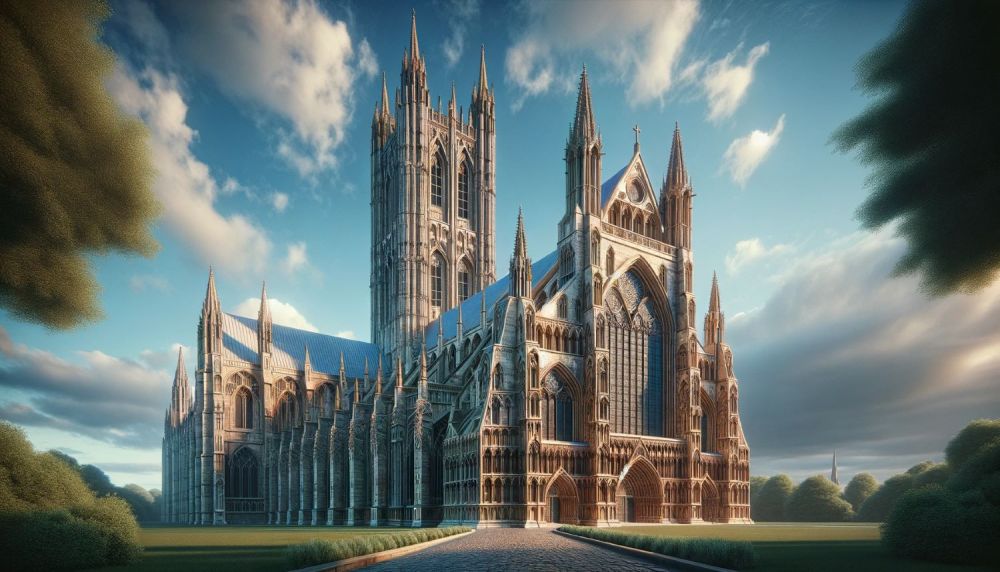

Canterbury Cathedral, located in Canterbury, United Kingdom, is an enduring symbol of Christianity and has been a significant pilgrimage site since the Middle Ages. Its history is deeply intertwined with the history of English Christianity and tourism, dating back to 597 AD when St. Augustine arrived as a missionary and established his seat (or ‘Cathedra’) in Canterbury. The cathedral has been visited by worshippers and travellers for centuries.
The dramatic increase in the cathedral's prominence and, subsequently, its visitor numbers began after the martyrdom of Thomas Becket in 1170. Becket, the then Archbishop of Canterbury, was murdered inside the cathedral by knights who believed they were acting on the wishes of King Henry II. Following Becket's canonization in 1173, Canterbury Cathedral became one of Europe's most important pilgrimage destinations.
The cathedral's fame as a place of miracle and pilgrimage was immortalized by Geoffrey Chaucer in his literary classic, "The Canterbury Tales", where he narrates the stories of different pilgrims traveling from London to Canterbury to visit the shrine of Thomas Becket. This 14th-century collection of stories reflects the importance of Canterbury and the cathedral in medieval England and highlights its early tourism history.
In Victorian times, the advent of the railway made Canterbury Cathedral even more accessible, bolstering visitor numbers and contributing to an earlier form of modern tourism. However, it wasn't until the 20th century, with the increased mobility offered by automobiles and later by the globalization of travel, that the cathedral witnessed a diverse influx of visitors from around the world.
Throughout the 20th century and into the 21st, Canterbury Cathedral remained a key attraction for tourists interested in British history, architecture, and religion. It was recognized as a UNESCO World Heritage Site in 1988, cementing its status as a place of extraordinary cultural significance and drawing even more visitors annually.
Today, Canterbury Cathedral continues to evolve with the latest tourism trends. Visitors are not only interested in the cathedral's spiritual and historical significance but also its contributions to arts, culture, and education. There has been a rising trend in experiential and educational tourism, with the cathedral offering guided tours, workshops, and interactive experiences that delve into its rich history and architecture.
Digital engagement has also become part of the cathedral's approach to tourism, with virtual tours and online resources catering to a global audience. Sustainability is another trend influencing cathedral tourism, with initiatives in place to preserve the ancient site for future generations while offering eco-friendly visitor experiences.
The importance of the cathedral reached a new peak in 2020 when it made efforts to adapt to the challenges posed by the COVID-19 pandemic, including the introduction of social distancing measures and the enhancement of online content to engage with audiences unable to visit in person. These adaptions underline the cathedral's ongoing commitment to remaining accessible and relevant as a world-class heritage destination.
In conclusion, Canterbury Cathedral has a rich and varied history as a tourist destination, from its roots as a medieval pilgrimage site to its current status as a place of learning, culture, and spiritual reflection. Its continuing adaptation to the needs and interests of modern visitors ensures its place in the future of global tourism.